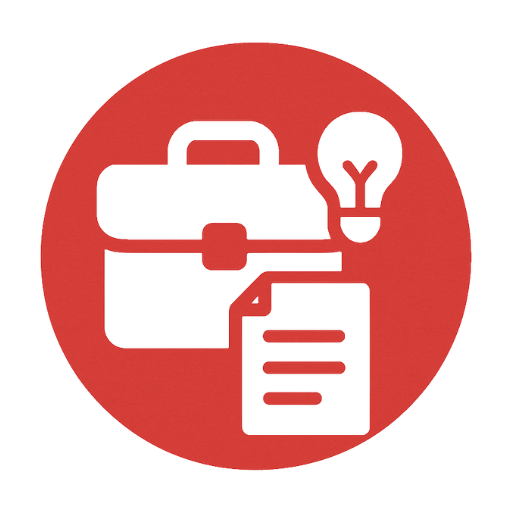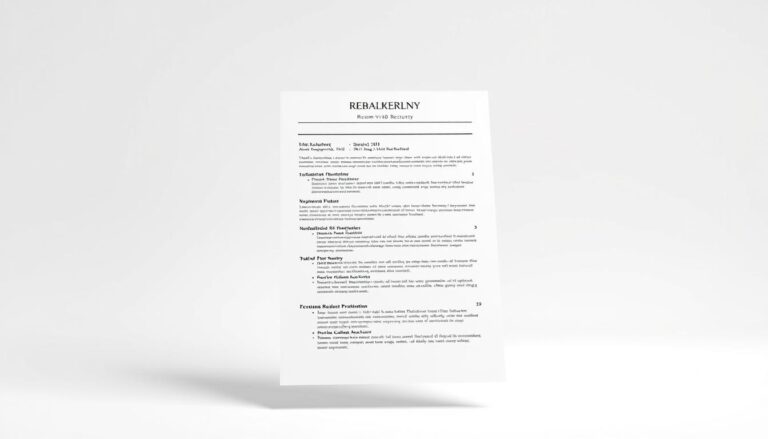How to Tailor Your Resume for Every Job Application

In today’s job market, sending the same resume for every job won’t work. You need to show employers you have the skills and experience they want.
Customizing your resume for each job is key. It means highlighting the skills and experiences that match the job. This makes your application more relevant and attractive.
By customizing your resume, you boost your chances of getting noticed. It shows you’re a good fit for the role and willing to put in extra effort.
Why One-Size-Fits-All Resumes Don’t Work
Employers seek resumes that show how you can meet their specific needs. In today’s job market, a generic resume can hurt your chances. It’s important to make a strong impression.
Generic resumes lack the personal touch hiring managers desire. They want to see you’ve researched the company and tailored your application. A generic resume is often too broad or vague, missing key skills and experiences.
Such resumes fail to show how your skills match the job. This can lead to your application being ignored for more tailored ones.
To stand out, customize your resume for each job. It’s not about starting from scratch every time. It’s about adjusting your resume to fit the job you’re applying for.
This approach shows you’re detail-oriented and excited about the role. It also boosts your chances of getting past ATS and catching the hiring manager’s eye.
Understanding the Job Description: Your Tailoring Blueprint
Start by carefully reading the job description. Look for the skills, qualifications, and experience the employer wants. This is the first step to making a resume that fits perfectly.
Highlighting these points helps you find the key phrases and qualifications needed for the job. This is key because it lets you use the same language in your resume. It boosts your chances of getting past ATS and catching the hiring manager’s attention.
Identifying Key Phrases and Qualifications
Look for repeated words or phrases in the job description. These might include specific software, soft skills, or industry terms. Also, pay close attention to the qualifications and responsibilities listed. They will tell you exactly what the employer is looking for.
For example, if the job description often talks about “data analysis” and “project management,” include these in your resume. Especially if you have experience in these areas. It shows you have the skills and that you’ve taken the time to understand the job.
By doing this, you’ll make a resume that’s made just for the job you’re applying for. This will greatly improve your chances of getting hired.
Researching the Company Culture for Perfect Alignment
Looking into the company culture is key when tailoring your resume for a job. Hiring managers want to find people who share their values and mission.
To show you fit, start by checking the company’s website, social media, and reviews. Look for clues about their culture, like their mission, values, and work environment.
Key areas to focus on include:
The company’s mission and values

With a clear picture of the company culture, you can make your resume stand out. Use the job posting’s language and highlight your achievements that match theirs.
Showing you align with the company culture boosts your chances. It helps you stand out to hiring managers and get an interview.
How to Tailor Your Resume for Every Job Application: Step-by-Step Process
Getting a job starts with a well-tailored resume. It’s not just about changing a few words. It’s about showing off the right skills and experiences for the job.
Resume tailoring means making your resume fit each job perfectly. It’s not about starting from scratch every time. It’s about tweaking your resume to match the job’s needs. This is done by carefully reading and understanding the job description.
Matching Your Experience to the Job Description
To tailor your resume, match your experience to the job. Look for key words and qualifications in the job posting. Then, add them to your resume. Use specific examples from your past to show how you’ve used those skills.
For example, if the job wants project management skills, show your experience in that area. Use words like “managed,” “created,” and “developed” to talk about your achievements. This shows you’re a good fit for the job.
By following this step-by-step process, you can make a resume that really stands out. It will show off your skills and experiences, boosting your chances of getting an interview.
Customizing Your Professional Summary for Maximum Impact
To stand out, your professional summary must be short and powerful. It’s a quick look at why you’re the best fit for the job. It showcases your biggest achievements and qualifications.
A well-written professional summary can make your resume much stronger. It should match the job you’re applying for. Use keywords from the job description to pass ATS checks and grab hiring managers’ attention.
Key tips for a compelling professional summary include:
- Start with a strong opening that grabs attention.
- Highlight your most relevant experience and skills.
- Quantify your achievements to demonstrate impact.
By following these tips, you can craft a summary that showcases your skills and appeals to employers. This increases your chances of getting an interview.
Remember, your resume summary is often the first thing hiring managers see. Make it impactful by being concise, directly relevant, and highlighting your unique value.
Tailoring Your Work Experience Section
To stand out, it’s key to customize your work experience section. This should highlight your achievements and duties that match the job.
When you tailor your work experience, focus on what fits the job you’re applying for. Read the job description carefully. This helps you understand what the employer wants.
Using Quantifiable Results
Using quantifiable results is a great way to show your impact. Instead of just listing your job duties, add specific numbers and metrics. These show how big your achievements were.
For instance, instead of saying “increased sales,” say “increased sales by 25%.” This clearly shows your success and its impact.
By focusing on relevant experience and quantifying your achievements, you make a strong work experience section. This section will catch the eye of hiring managers.
Remember, the goal is to show how your past experiences make you a good fit for the job. Tailoring your work experience and using numbers can really help you stand out in a competitive job market.
Customizing Skills and Certifications Sections
Customizing your skills and certifications sections can make your resume stand out. It’s key to show the skills and certifications that match the job you’re applying for.
Tailoring Your Skills Section
Start by listing the skills most relevant to the job. For example, if you’re applying for a digital marketing role, highlight SEO, Google Analytics, and social media skills. Keep your skills section short and focused on the job’s needs.
Adding relevant certifications can boost your credibility. Certifications like PMP for project managers or AWS Certified Developer for cloud computing are highly valued. Make sure to include any certifications that match the job you’re applying for, and explain them if needed.
Best Practices for Certifications
When listing certifications, follow best practices. Include the certification name, the issuing organization, and the date earned. For example, “Certified Scrum Master (CSM), Scrum Alliance, June 2020.” This shows you’re serious about your career.
By customizing your skills and certifications sections, you can catch the eye of hiring managers and ATS systems.
Resume Design and Formatting Considerations
The design and formatting of your resume are key. They show how you present yourself to hiring managers. A good resume highlights your skills and shows you pay attention to details.
Choosing the Right Format is important. A one-page resume is usually best, but some jobs need more details. For example, academic or research roles might need a longer resume.
Think about the industry you’re applying to. Creative fields might let you get creative with your resume’s look. But, corporate jobs often prefer a more traditional style.
For resume formatting, keep it clear and easy to read. Use headings, bullet points, and space well. Choose fonts like Arial, Calibri, or Helvetica, and sizes between 10 and 12 points.
Your resume’s design and formatting should make a great first impression. They should clearly show your qualifications to employers.
Tools and Resources for Efficient Resume Tailoring
Creating a tailored resume is easier with the right tools and strategies. Today, many online tools and resources help job seekers craft a standout resume.
Resume Building Tools: Online resume builders like Resume.io and Canva make it simple. They offer customizable templates and easy-to-use interfaces. This helps you showcase your skills and experiences effectively.

Keyword Optimization Resources: Tools such as WordClouds and Keyword Tool help find and add important keywords. This makes your resume more visible to applicant tracking systems (ATS).
Resume Review and Editing Resources: Services like ResumeGenius and TopResume offer professional feedback. They help improve your resume’s impact.
Using these resources, job seekers can tailor their resumes well. This increases their chances of getting an interview.
Conclusion: Making Resume Tailoring a Habit
Tailoring your resume for each job can take more time. But, it greatly increases your chances of getting noticed. You now know how crucial it is to customize your resume for the job and company.
Being consistent is essential for making resume tailoring a habit. With every application, research the company, update your summary, and tweak your experience section. As you tailor more resumes, you’ll get better at highlighting your skills.
Adding resume tailoring to your job search routine boosts your success chances. Make it a habit to regularly review and update your resume. This will help you land your dream job.
Building a habit of resume tailoring requires effort, but the benefits are huge. Stay committed, and with hard work, you’ll reach your career goals.






